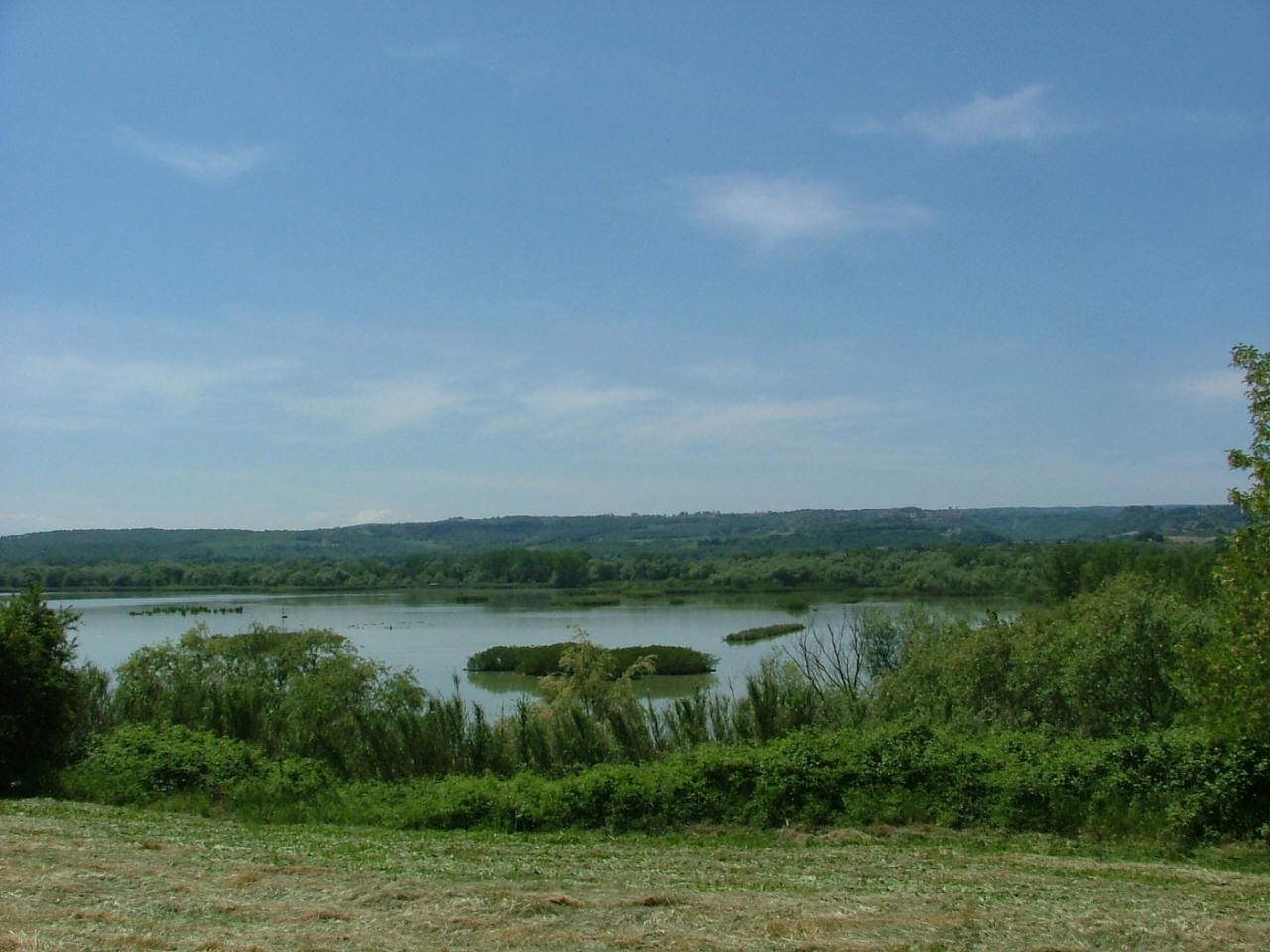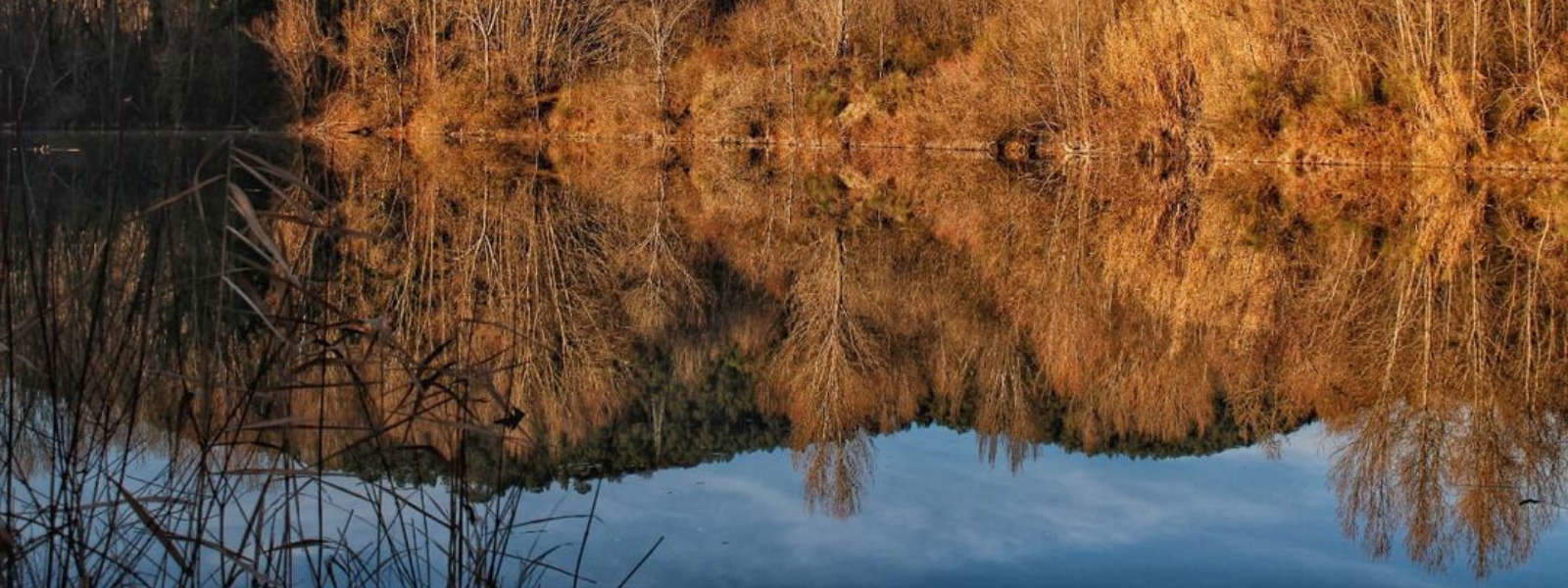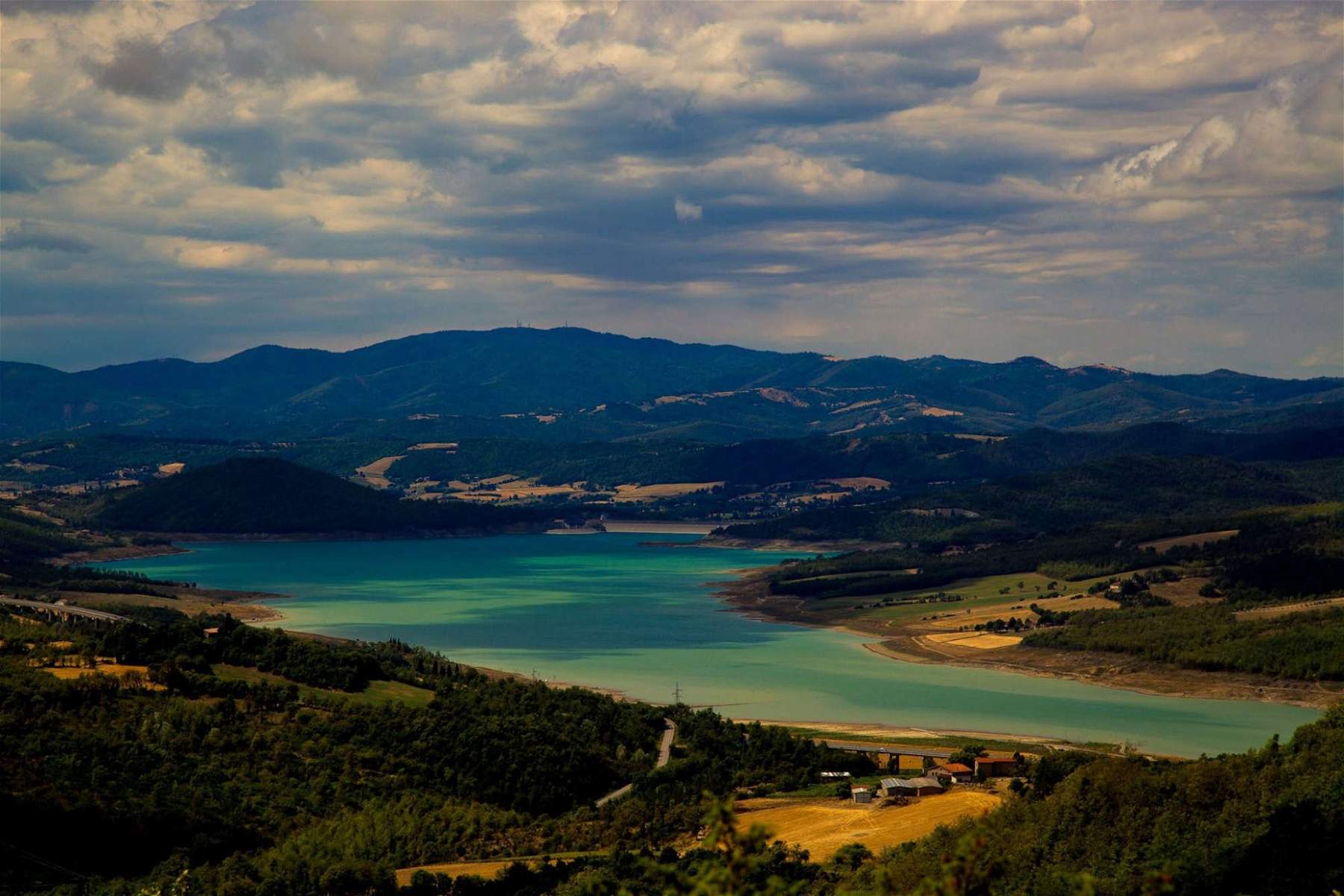The Valtiberina, renowned for its rich cultural and artistic history, also offers extraordinary natural beauty. Among the gems of this little-known area of Tuscany is theGolena del Tevere Protected Natural Area, a place where unspoiled nature unfolds along the banks of the Tiber River, which flows through this part of the region on the border with Umbria, offering a unique experience that blends the majesty of the river landscape with the vitality of the local fauna and flora. A flat area, located downstream of the Montedoglio dam, and bordered around the Monti Rognosi, Alpe di Poti and Alpe della Luna, which includes the alluvial plain of the river, known precisely as the “floodplain”: by this term is meant an area between the leaning bed of a watercourse and its natural bank, which is submerged during periods of flood. An area that, therefore, at certain times of the year is inundated by water and is populated with plant species that can withstand this alternation of dry periods and flood periods.
The nature reserve was established with the aim of preserving the river ecosystem of the Tiber, protecting the flora and fauna that populate it, following the alterations suffered as a result of the construction of the Montedoglio dam. The latter, located a short distance from the town of Anghiari, was built between 1978 and 1993 in the middle of the narrow Montedoglio hill: it is an imposing structure that dams a reservoir as long as 7.5 kilometers and covers an area of 800 hectares. From the dam, built to supply electricity to this area of Tuscany (but it also plays an important role in flood prevention because, by controlling the flow of the Tiber River, the dam can reduce the risk of flooding in surrounding areas, and in addition, the ability to regulate the flow of water allows for more efficient management of water resources, ensuring a constant supply in times of drought and reducing the risk of water shortages), an artificial reservoir, Lake Montedoglio, has originated, which is also the largest lake in Tuscany, and is particularly popular with fishing enthusiasts because of the many fish species it hosts: in particular, fishing for pike, a fish prized for its tasty meat, is widespread, but species such as perch, catfish, chub, pike-perch, and bleak can also be found in the lake’s waters. It is also possible to find in the waters of the floodplain the barbel tiberino, also known as barbo etrusco, a fish endemic to the fresh waters of Tyrrhenian Italy: rare in the lake, it is still possible to find it in the waters of the Tiber, from which it takes its name.



And speaking of biodiversity, the Tiber floodplain is an example of sustainable management and environmental conservation, providing a refuge for many animal and plant species. Among the plants prevalent are those typical of wetlands or at any rate of thickets typical of riverbeds: thus poplars, elms, willows, alders, farnias, dogwoods, and reeds abound, providing ideal habitats for a variety of small mammals and insects. Birds, too, are those typical of rivers and marshes: egrets, mallards, coots and cormorants are easily spotted presences, as are bitterns and kingfishers, other birds typical of these areas. The waters of the Tiber then support, as mentioned, a rich fish community, contributing to the presence of bird species that find refuge along the banks of the river. Birdwatchers can enjoy spectacular observations along the routes that penetrate the Tiber plain. This biological diversity contributes to the ecological balance of the area and its importance as a nature reserve.
For visitors wishing to explore the Golena del Tevere Protected Natural Area, there are numerous nature trails (not marked) along the course of the river, with panoramic views and the opportunity to observe wildlife up close. Outdoor activities are varied and suitable for all ages, from hiking and biking to birdwatching and fishing. Lake Montedoglio also offers opportunities for windsurfing since the eastern side of the lake is often buffeted by winds.
The constant of this area, however, is its tranquility, the sense of calm it instills: we are in a little-known, un-urbanized landscape, perfect for those who want total immersion in nature, far from the cities. A curiosity, in conclusion: the beauty and serenity of this corner of Tuscany were known since ancient times. In the letter that Pliny the Younger sent to his friend Domitius Apollinaris (letter 6 of Book V of his Epistles) the qualities of these lands are praised. Describing the area where Pliny was staying on one of his summer sojourns (from the description, it is precisely the floodplain of the Tiber), he speaks to his friend as follows: “In winter the air is cold and frosty [...], in summer the heat is wonderfully temperate: there is always a breath of agitated air, and the breezes are more frequent than the winds. Hence the number of old people there: you find the grandfathers and great-grandfathers of the young people still living; you constantly hear old stories and tales from the past, so that when you set foot there, you could imagine that you were born in another century. The villa’s surroundings are beautiful. Imagine an immense amphitheater, such as only Nature can create, with a wide plain surrounded by hills, and the tops of the hills themselves covered with tall, ancient forests. Hunting is abundant and varied. Along the mountain slopes are expanses of tall forests, and among these are rich, deep knolls-where if you look for a stone you will struggle to find one-that are as fertile as the flatter plains, and ripen crops just as rich, though later in the season. Below these, all along the slopes, are vineyards that present far and wide an unbroken line, at the edges and lowest level of which is a fringe of trees. Then you reach the meadows and fields, fields that only the most powerful oxen and the strongest plows can plow. The soil is so hard and composed of such thick clods that when it is first crushed it must be plowed nine times before it is sown. The meadows are bejeweled with flowers and produce clover and other grasses, which are always tender and soft, and always look fresh. In fact all parts are well nourished by uninterrupted streams, and even where there is the most water there are no swamps, because the slope of the land discharges into the Tiber all the moisture it receives and cannot absorb on its own. In the middle of the plain flows the Tiber; it is navigable for ships and all the grain is carried downstream to the city, at least in winter and spring. In summer the volume of water diminishes, leaving the dried-up bed with only the name of a great river, but in autumn it resumes its flood. You would be happy if you could admire the area from the top of the mountain, because you would think you were looking not so much at the land and fields as at a wonderfully beautiful landscape picture.”
Known since ancient times, the Tiber floodplain is a natural treasure where beautiful landscapes, unique fauna and flora, suggestions of the distant past and the institutions’ commitment to sustainability make this area a must-see for nature lovers and those who wish to discover the unspoiled beauty of central Italy and the Tiber Valley, in one of its most authentic and best preserved areas.
 |
| On the Tiber floodplain in Valtiberina, in the landscapes beloved by Pliny the Younger |
Warning: the translation into English of the original Italian article was created using automatic tools. We undertake to review all articles, but we do not guarantee the total absence of inaccuracies in the translation due to the program. You can find the original by clicking on the ITA button. If you find any mistake,please contact us.